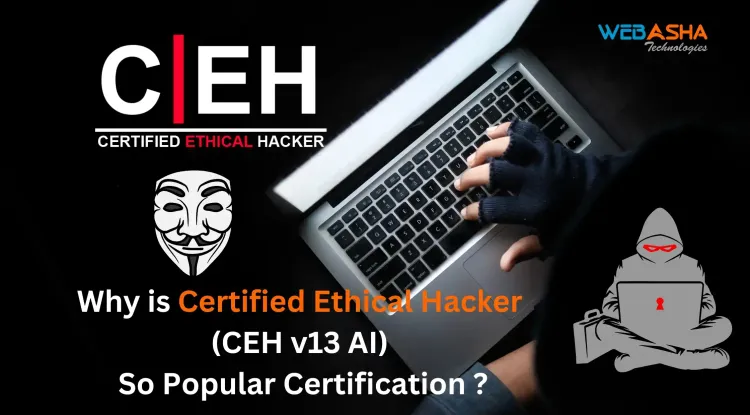What Should You Do If You Fall Victim to a BlackEye Phishing Attack? A Step-by-Step Recovery Guide
Falling victim to a BlackEye phishing attack can put your sensitive data, financial accounts, and online identity at serious risk. Attackers use fake login pages to steal usernames, passwords, and other credentials, which can lead to unauthorized access to personal and business accounts. If you realize that you have entered your information on a phishing page, immediate action is required to minimize damage. The first step is to change compromised passwords and enable multi-factor authentication (MFA) on all affected accounts. Running a malware scan on your device ensures that no malicious software has been installed. Reporting the phishing attack to relevant organizations, such as your bank, cybersecurity agencies, and the platform being imitated, helps prevent further exploitation. To safeguard against future phishing attempts, staying educated on cybersecurity best practices, verifying URLs before entering login details, and using security tools like password managers and email filt

Table of Contents
- Introduction
- Understanding BlackEye Phishing Attacks
- Immediate Steps to Take After a BlackEye Phishing Attack
- How to Prevent Future Phishing Attacks
- Conclusion
- Frequently Asked Questions (FAQs)
Introduction
BlackEye phishing attacks are one of the most deceptive and dangerous forms of cyber threats. Cybercriminals use BlackEye, a phishing toolkit, to create fake login pages that look exactly like legitimate websites, tricking users into entering their credentials.
If you've fallen victim to a BlackEye phishing attack, it's crucial to act immediately to prevent further damage, secure your accounts, and protect yourself from future attacks. In this blog, we’ll cover step-by-step actions to take after a phishing attack and how to strengthen your online security.
Understanding BlackEye Phishing Attacks
BlackEye phishing works by cloning real websites, such as banking portals, social media sites, email services, and corporate logins. Victims are tricked into entering their usernames, passwords, and even Two-Factor Authentication (2FA) codes, which are then stolen by hackers.
Common Ways BlackEye Phishing Pages Are Spread:
- Phishing Emails: Fake emails that appear to be from trusted sources, prompting users to log in.
- Fake SMS Alerts (Smishing): Text messages that contain phishing links.
- Social Media Messages: Malicious links sent via Facebook, WhatsApp, or Instagram.
- Compromised Websites: Clicking on malicious ads or links that lead to phishing pages.
Immediate Steps to Take After a BlackEye Phishing Attack
1. Change Your Passwords Immediately
If you accidentally entered your login credentials on a phishing page, change your password immediately.
Use strong passwords with at least 12-16 characters, including uppercase, lowercase, numbers, and special characters.
Do NOT reuse old passwords.
Use a password manager to generate and store unique passwords securely.
2. Enable Multi-Factor Authentication (MFA)
If you haven’t already, turn on MFA for all critical accounts, including:
- Email accounts (Gmail, Outlook, etc.)
- Social media (Facebook, Instagram, Twitter)
- Banking and financial services
- Corporate accounts
MFA adds an extra layer of security by requiring a second verification step, such as an OTP or biometric authentication.
3. Scan Your Device for Malware
Some phishing attacks install keyloggers or spyware on your system to steal credentials. Run a full system scan using:
Windows Defender (Windows)
Malwarebytes
Bitdefender or Kaspersky Antivirus
If malware is detected, remove the threats immediately and consider resetting your device.
4. Monitor Your Accounts for Suspicious Activity
Regularly check your bank statements, email activity, and social media logins for unauthorized access.
Look for:
- Unfamiliar login locations
- Unrecognized transactions
- Strange emails sent from your account
If you find suspicious activity, contact the service provider and report unauthorized access.
5. Report the Phishing Attack
To Your Email Provider: Gmail, Outlook, and Yahoo have options to report phishing emails.
To Your Bank (If Financial Information Was Compromised).
To Cybersecurity Authorities:
- India: Cybercrime.gov.in
- USA: FTC.gov
- UK: Action Fraud
Reporting phishing attacks helps prevent others from falling victim and allows authorities to take action.
6. Secure Your Email and Other Linked Accounts
Since email accounts are often used for password resets, securing your email is a top priority.
Steps to Secure Your Email:
- Change the email password immediately.
- Enable MFA (Two-Factor Authentication).
- Remove any unknown recovery email addresses or phone numbers.
If your email was compromised, hackers might attempt to reset passwords for other linked accounts (e.g., banking or shopping accounts).
7. Contact Your Bank if Financial Data Was Stolen
If you entered credit card or banking details, immediately:
Call your bank’s customer service and report unauthorized transactions.
Freeze your card and request a replacement.
Monitor your bank statements for suspicious withdrawals.
How to Prevent Future Phishing Attacks
Always check the website URL before logging in. Phishing sites often have misspelled domains (e.g., “faceboook.com” instead of “facebook.com”).
Never click on suspicious links in emails or messages.
Verify emails from senders before opening links or attachments.
Use a password manager to prevent entering credentials on fake websites.
Educate yourself and others about phishing threats.
Cybercriminals are constantly improving their techniques, so staying vigilant and security-conscious is the best defense.
Conclusion
Falling victim to a BlackEye phishing attack can be a stressful experience, but by acting quickly and decisively, you can minimize damage and secure your accounts.
Key Takeaways:
✔ Change all compromised passwords immediately.
✔ Enable Multi-Factor Authentication (MFA) for added security.
✔ Scan your devices for malware to remove potential threats.
✔ Monitor your accounts and report any suspicious activity.
✔ Educate yourself on phishing techniques to avoid future scams.
Cyber threats are constantly evolving, but by staying informed and taking proactive measures, you can protect your data and online identity.
Frequently Asked Questions (FAQs)
General Questions About BlackEye Phishing
What is a BlackEye phishing attack?
A BlackEye phishing attack is a cyber scam where attackers use fake login pages that imitate real websites to steal user credentials.
How do cybercriminals create fake phishing pages?
They use tools like BlackEye, which clone real website login pages and trick users into entering their credentials.
Why is BlackEye phishing dangerous?
It can steal passwords, financial data, and even Two-Factor Authentication (2FA) codes, leading to identity theft or financial fraud.
Can BlackEye phishing steal my banking credentials?
Yes, if you enter your banking details on a fake page, attackers can access your bank accounts and conduct unauthorized transactions.
How do I recognize a phishing attack?
Look for misspelled URLs, unverified email senders, urgent messages asking for credentials, and fake security alerts.
Immediate Actions After a BlackEye Phishing Attack
What should I do first if I entered my credentials on a phishing page?
Immediately change your password and enable multi-factor authentication (MFA) for your accounts.
Should I log out from all devices after a phishing attack?
Yes, log out of all active sessions on your compromised account to prevent unauthorized access.
Can hackers access my personal files from a phishing attack?
If the phishing page installed malware, hackers may access personal files. Run a full system scan to detect any threats.
Should I report the phishing attack to my bank?
Yes, if financial information was compromised, contact your bank immediately to freeze or secure your accounts.
How can I check if my email or password has been compromised?
Use online tools like "Have I Been Pwned" to check if your credentials have been leaked in a data breach.
Securing Your Accounts and Devices
How do I secure my email after a phishing attack?
Change your password, enable MFA, check your email recovery options, and remove any unauthorized forwarding rules.
Can I still recover my account after it has been hacked?
Yes, use the account recovery process provided by the website and follow the steps to verify ownership.
What security settings should I enable after a phishing attack?
Enable MFA, security alerts for logins, and review connected apps and devices for suspicious activity.
Do I need to scan my device for viruses after a phishing attack?
Yes, run a full system scan using reliable antivirus software like Malwarebytes or Windows Defender.
Should I reset my computer if I clicked on a phishing link?
If you suspect malware infection, backing up your files and performing a factory reset might be the safest option.
Reporting and Legal Actions
Who should I report a BlackEye phishing attack to?
You can report phishing attacks to:
- Google Safe Browsing (Report Phishing Page)
- Cybersecurity authorities (CERT-In, FBI, Action Fraud)
- Your bank or financial institution
Can I recover stolen money after a phishing attack?
If you act quickly, banks may reverse unauthorized transactions or help you recover lost funds.
Can law enforcement track down phishing scammers?
Yes, cybersecurity agencies work to track down phishing scams, but recovery depends on the complexity of the attack.
Will my data be misused if stolen in a phishing attack?
Yes, attackers can sell stolen data on the dark web or use it for identity theft and fraud.
What legal action can be taken against phishing attackers?
Cybercriminals behind phishing attacks can be prosecuted under cybercrime laws in various countries.
Preventing Future Phishing Attacks
How can I avoid phishing scams in the future?
Always verify URLs, enable MFA, never click suspicious links, and stay educated on phishing techniques.
Should I use a password manager?
Yes, password managers generate and store strong, unique passwords, reducing the risk of entering them on fake sites.
Is clicking on a phishing link dangerous even if I don’t enter credentials?
Yes, some links auto-download malware onto your device. Avoid clicking on unknown links.
How can businesses protect employees from phishing?
Companies should provide cybersecurity training, enable MFA, and implement email filtering to prevent phishing.
Are mobile devices vulnerable to phishing attacks?
Yes, attackers use smishing (SMS phishing) and fake mobile apps to steal user data.
Technical and Advanced Security Questions
Can phishing pages bypass Two-Factor Authentication (2FA)?
Yes, attackers use real-time phishing kits to intercept 2FA codes. Always enable hardware-based authentication if possible.
Can antivirus software detect phishing attacks?
Some advanced antivirus tools can detect phishing attempts, but user awareness is the best defense.
Is email encryption effective against phishing?
Email encryption secures your emails, but phishing still relies on human error to steal data.
Can phishing scams target businesses and employees?
Yes, attackers use business email compromise (BEC) scams to trick employees into transferring money or data.
What tools can I use to detect phishing pages?
You can use tools like Google Safe Browsing, PhishTank, and browser security features to detect phishing websites.












![Top 10 Ethical Hackers in the World [2025]](https://www.webasha.com/blog/uploads/images/202408/image_100x75_66c2f983c207b.webp)

![[2025] Top 100+ VAPT Interview Questions and Answers](https://www.webasha.com/blog/uploads/images/image_100x75_6512b1e4b64f7.jpg)









